On average, the Universe today is an extremely cold place.
At any time in our cosmic history, any observer will experience a uniform “bath” of omnidirectional radiation that originated in the Big Bang. Today, from our vantage point, it is only 2.725 K above absolute zero, and is therefore observed as the cosmic microwave background, peaking in microwave frequencies. At great cosmic distances, when we look back in time, this temperature was warmer depending on the redshift of the observed distant object.
In intergalactic space, only the residual glow of the Big Bang warms matter noticeably.

Visible (left) and infrared (right) views of the dust-rich Bok globule, Barnard 68. It has a temperature below 20 K, so it remains invisible in both the visible and near infrared , but it’s still quite warm compared to cosmic microwave background temperatures.
At 2.725 K above absolute zero, only places that are actively cooling are colder.

A color-coded image of the Boomerang Nebula, taken by the Hubble Space Telescope. Gas expelled from this star expanded incredibly rapidly, causing adiabatic cooling. There are places inside that are colder than even the remaining glow of the Big Bang itself.
However, many mechanisms warm the matter of the Universe.

The image shows the central region of the Tarantula Nebula in the Large Magellanic Cloud. The young and dense star cluster R136 is visible in the lower right of the image. Tidal forces exerted on the Large Magellanic Cloud by the Milky Way trigger a wave of star formation there, resulting in hundreds of thousands of new stars. The injection of energy into the Universe provided by star formation is one of the primary sources that heat matter in galactic environments.
Stars, for example, produce radiation that strikes nearby gas and dust.
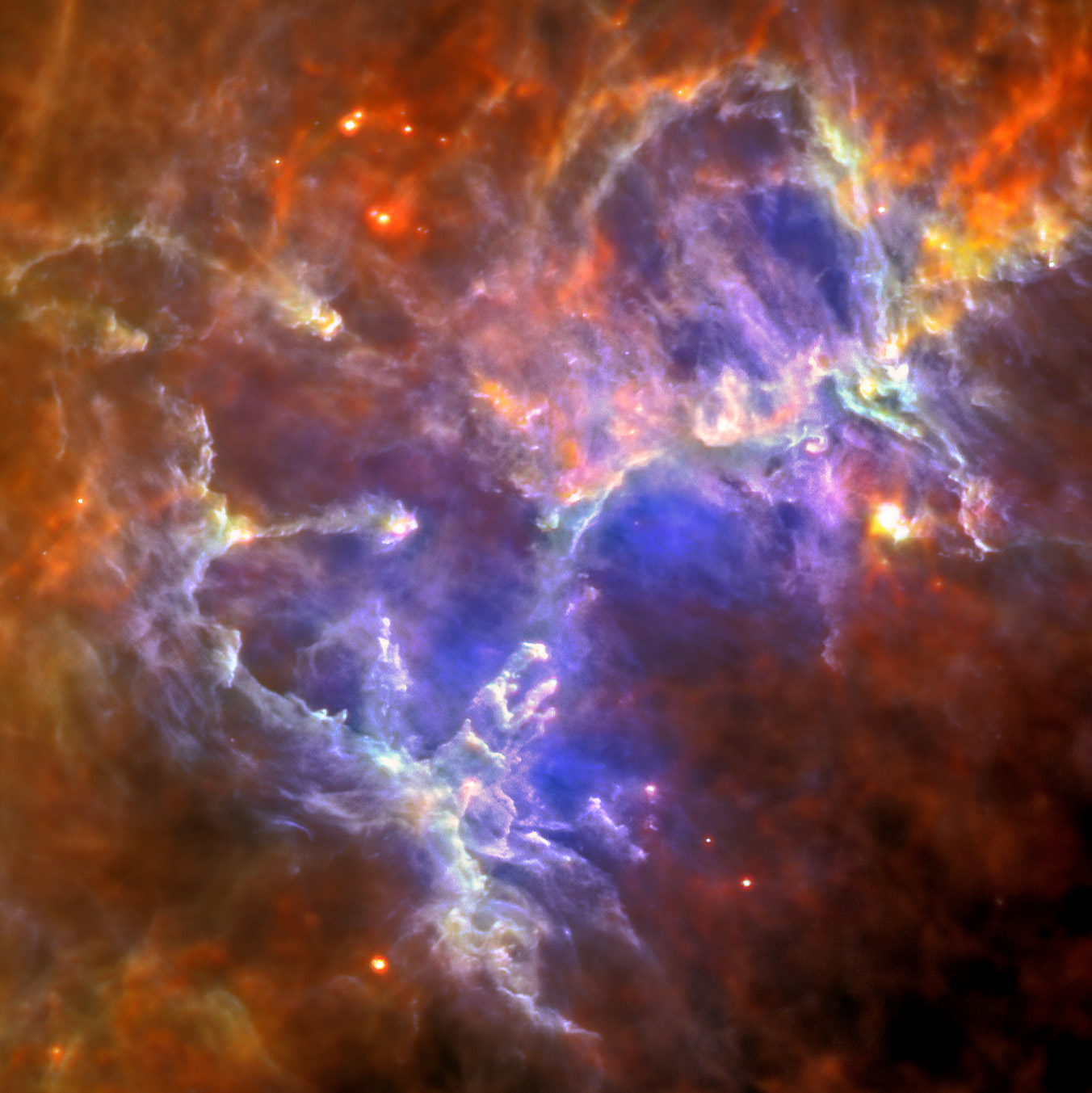
This far-infrared image of Messier 16, the Eagle Nebula, shows a variety of neutral atoms heated between 10 K (red) and 40 K (blue) by stars that have already formed inside . Below the center of the image, the famous Pillars of Creation can be seen in far infrared, a unique view of this object thanks to the still unrivaled capabilities of ESA’s Herschel Observatory.
Heated to tens of degrees above absolute zero, it radiates in the far infrared.

The famous Pillars of Creation inside the Eagle Nebula are a place where new stars form in a race against evaporating gas. In the visible light view, left, the new stars are largely obscured, while the infrared light allows us to see through the dust to the newly formed stars and protostars within. An even cooler gas will radiate at longer wavelengths.
Closer to a newly formed star, the radiation sculpts protoplanetary structures.

A sample of 20 protoplanetary disks around young nascent stars, as measured by the disk substructures of the High Angular Resolution Project: DSHARP. Such observations have taught us that protoplanetary disks form mostly in a single plane and tend to support the basic accretionary scenario of planet formation. Disc structures are visible in both infrared and millimeter/submillimeter wavelengths.
Heated to hundreds of degrees, these protoplanetary disks radiate in all the infrared.
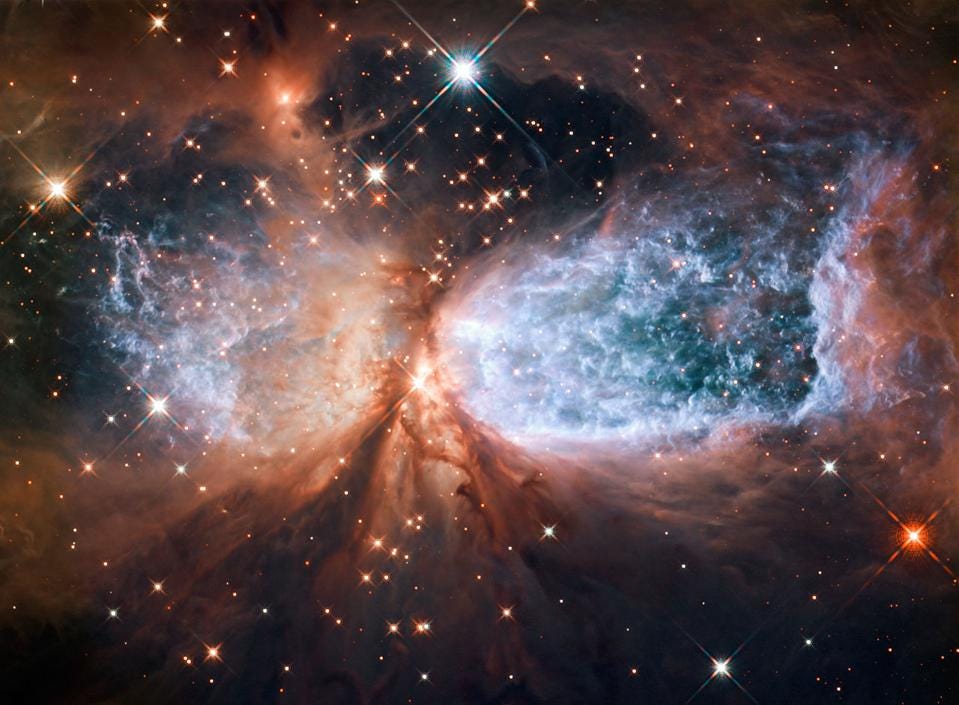
The Sh 2-106 star forming region has an interesting array of phenomena, including illuminated gas, a bright central star that provides this illumination, and blue reflections off gas that has not yet been blown out. The various stars in this region likely come from a combination of stars from many different pasts and generational histories, but none of them are pristine: they all contain significant amounts of heavy elements.
Higher energy phenomena, however, can have dramatic astronomical consequences.
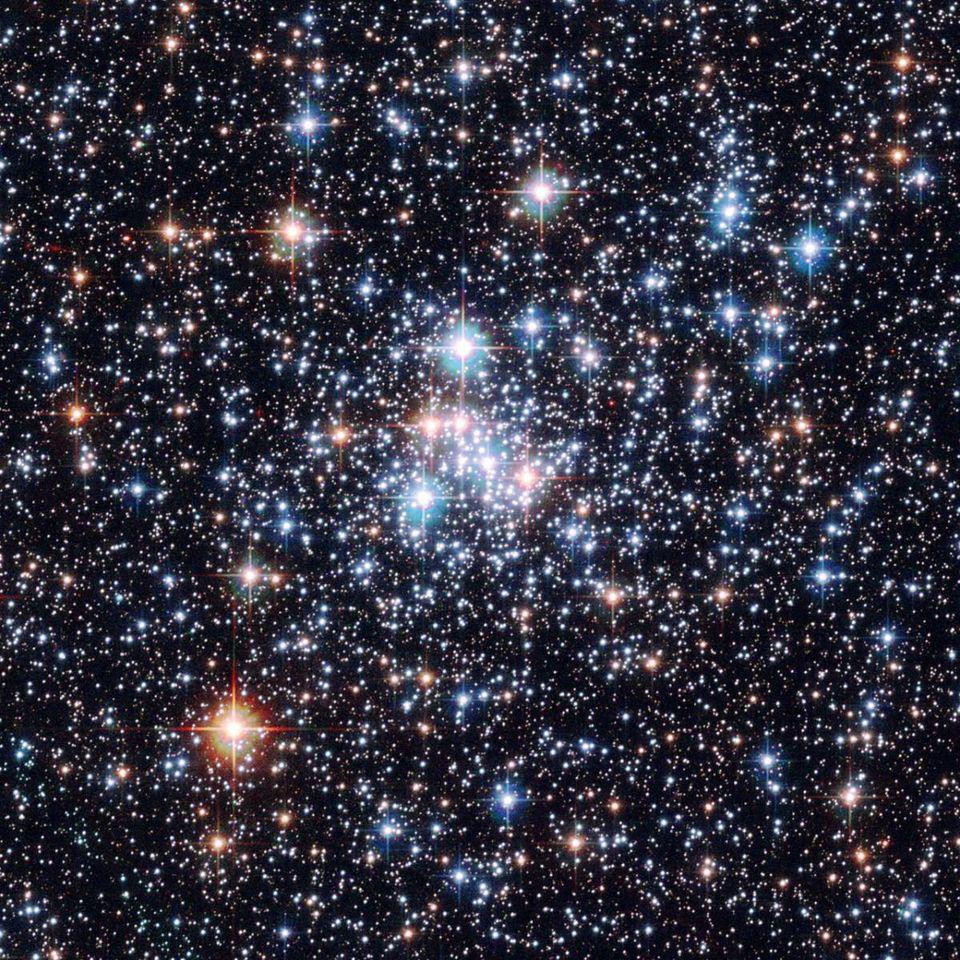
This image features the open star cluster NGC 290, photographed by Hubble. These stars, pictured here, show a variety of colors as they are at different temperatures, and so hotter stars emit more blue light than red while cooler ones emit more red than blue. Different colors can only be revealed by imaging stars in several different wavelengths, but it is the bluest, hottest, and brightest stars that primarily cause surrounding matter to heat up and ionize.
The hottest, most massive young stars shine brightly in ultraviolet light.

Most galaxies contain only a few star-forming regions: where the gas collapses, new stars form, and ionized hydrogen is found in a bubble surrounding this region. In a star galaxy, pretty much the entire galaxy itself is a star-forming region, with M82, the Cigar Galaxy, being the closest with these properties. Radiation from hot young stars ionizes a variety of atomic and molecular gases, creating emission signatures that can be revealed visually with the right astronomical filters.
The radiation heats the gas to thousands of degrees, ionizing many atoms and molecules.

When the central star of a dying star system heats up to temperatures of about 30,000 K, it becomes hot enough to ionize previously ejected material, creating a veritable planetary nebula in the case of a Sun-like star. . Here, NGC 7027 has just crossed that threshold and continues to grow rapidly. At only ~0.1-0.2 light-years in diameter, it is one of the smallest and youngest known planetary nebulae.
As electrons roll down their energy levels, they emit a variety of emission signatures.

The Large Magellanic Cloud is home to the closest supernova of the last century. The pink regions here are not man-made, but are signals of ionized hydrogen and active star formation, likely triggered by gravitational interactions and tidal forces. The pink regions appear specifically when electrons fall back on ionized hydrogen nuclei and transition from the n=3 to n=2 energy level, producing photons of precisely 656.3 nm.
At a few thousand degrees, hydrogen ionizes, making nebulae pink with emission lines.
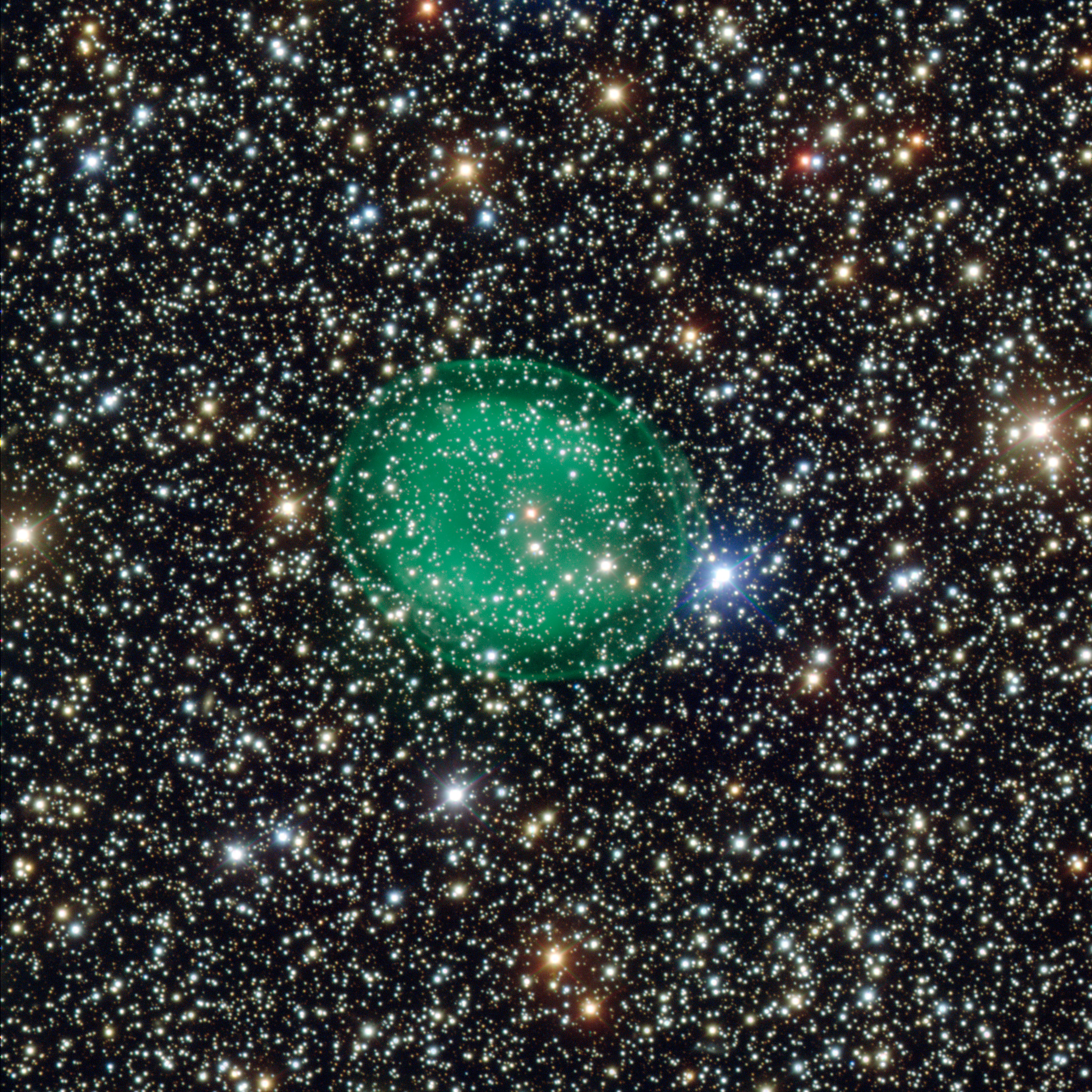
Around a variety of stellar corpses and dying stars, doubly ionized oxygen atoms produce a characteristic green glow, as electrons cascade through the various energy levels when heated to temperatures exceeding ~50,000 K. Here, the planetary nebula IC 1295 shines brightly.
Above ~50,000 K, around dying stars, doubly ionized oxygen glows an eerie green.
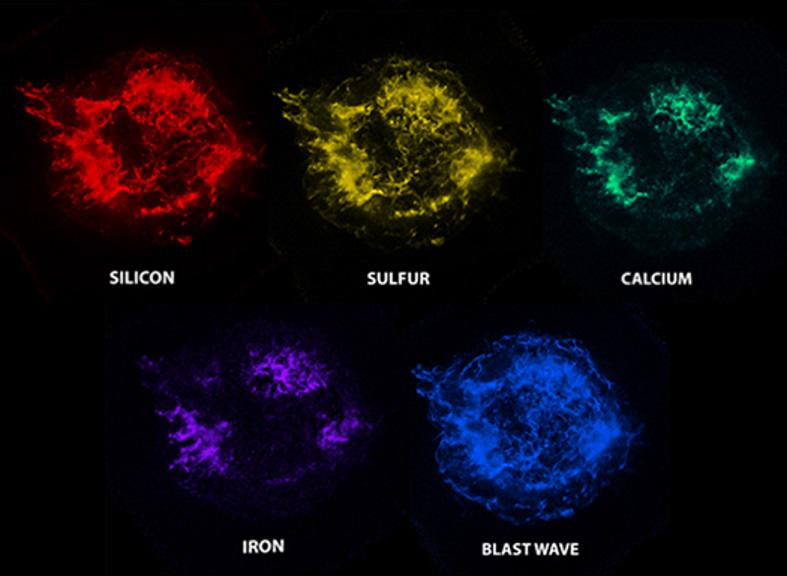
This image from NASA’s Chandra X-ray Observatory shows the location of different elements in the Cassiopeia A supernova remnant, including silicon (red), sulfur (yellow), calcium (green) and iron (purple). Each of these elements produces x-rays in narrow energy ranges, allowing maps of their location to be created.
The colliding galaxies heat the gas further, resulting in X-ray emissions.

X-ray (pink) and global matter (blue) maps of various colliding galaxy clusters show a clear separation between normal matter and gravitational effects, some of the strongest evidence for dark matter. X-rays come in two varieties, soft (lower energy) and hard (higher energy), where collisions of galaxies can create temperatures exceeding several hundred thousand degrees.
But neutron stars and radiant black holes can shape entire galaxies.

The radio features shown here, in orange, highlight the giant Alcyoneus radio galaxy, along with the central black hole, its jets, and the lobes at either end. This feature is the largest known in the Universe to match a single galaxy, and makes Alcyoneus the largest known galaxy in the Universe at present. Although only the radio and infrared characteristics are shown here, they also radiate in the high energy part of the spectrum.
Producing the most energetic gamma photons, even the Large Hadron Collider can’t compete.
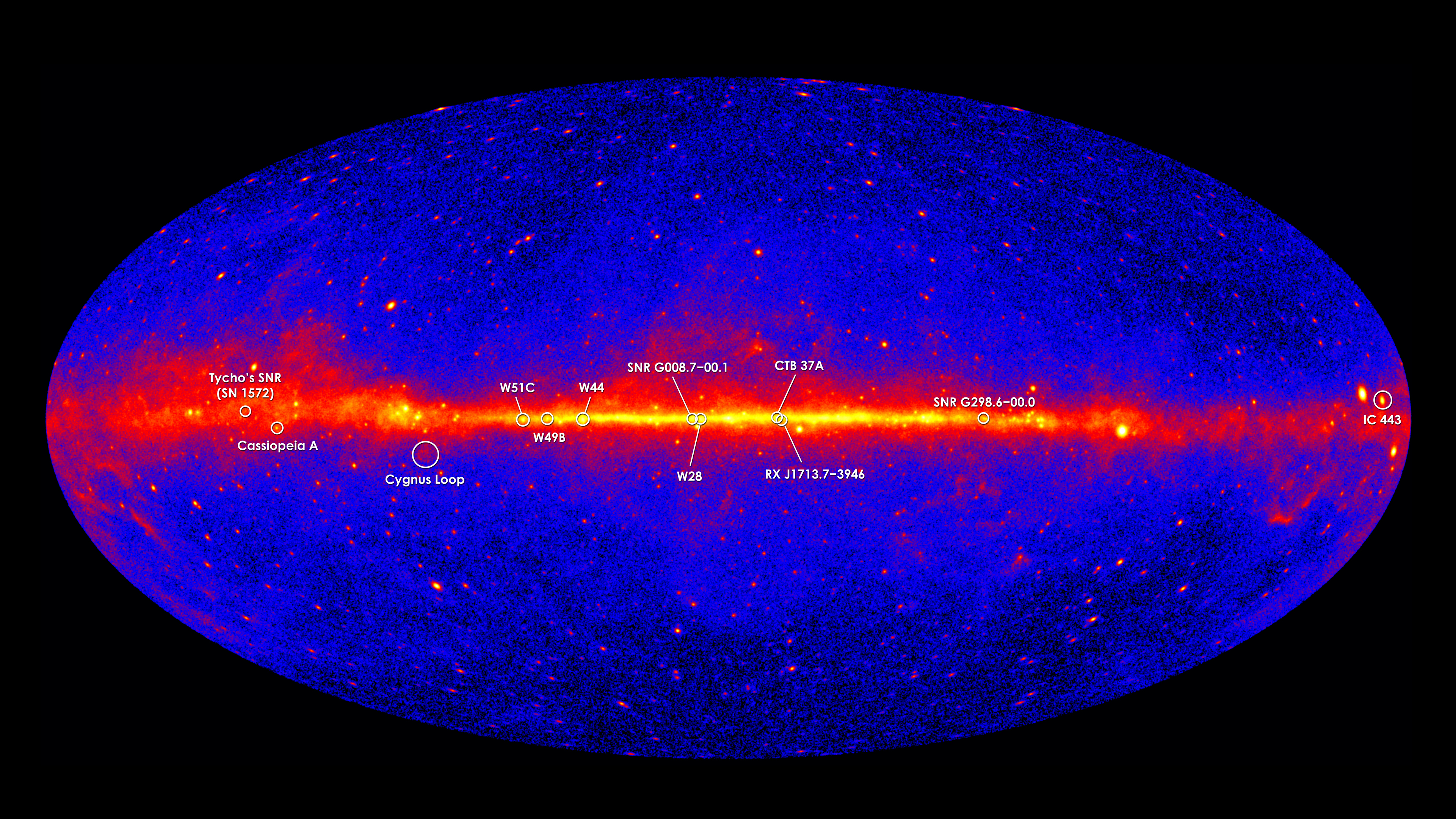
Fermi’s view of the gamma-ray sky reveals emission from our own galaxy, extragalactic objects, pulsars and, as highlighted here, supernova remnants as well.
Mostly Mute Monday tells an astronomical story in pictures, visuals and no more than 200 words. Talk less; smile more.
 Universo Viviente
Universo Viviente



